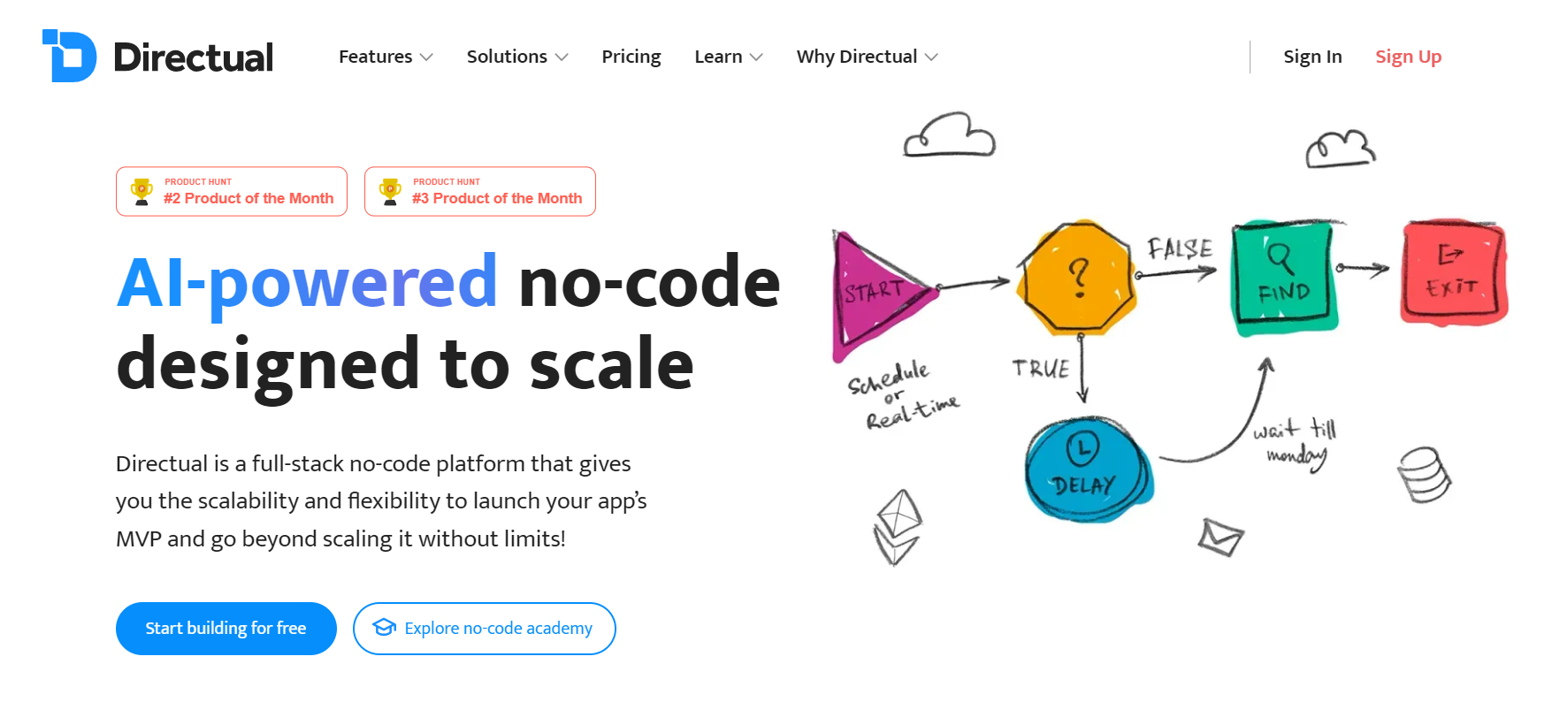No-Code Open System Data Source Creation: Streamline Complex Advancement Jobs
No-Code Open System Data Source Creation: Streamline Complex Advancement Jobs
Blog Article
Discover Just How Scalable Databases Can Be Utilized Without Coding to Boost Your Company Procedures
In today's busy business setting, the capacity to manage and examine information successfully is vital. no-code. Scalable databases, specifically when paired with no-code services, use a transformative strategy that encourages non-technical users to improve procedures.
Understanding Scalable Databases
Scalable databases are vital for modern business procedures, allowing organizations to effectively handle raising quantities of data without compromising performance. These databases are made to adapt and expand to the transforming needs of a business, ensuring that they can manage larger datasets and more complicated inquiries as business demands develop.
Recognizing scalable data sources entails recognizing their 2 primary types: upright scaling and straight scaling. Vertical scaling, or "scaling up," includes including more power (CPU, RAM) to an existing web server to enhance efficiency. On the other hand, horizontal scaling, or "scaling out," entails including more web servers to distribute the tons, which commonly results in greater adaptability and mistake tolerance.
Another critical aspect is the style of scalable databases, which can be either non-relational or relational. Relational databases, such as MySQL and PostgreSQL, are structured and utilize SQL for queries, while non-relational data sources, like MongoDB and Cassandra, provide more flexibility with disorganized information.
Inevitably, understanding scalable databases is vital for services intending to take advantage of data as a strategic property, allowing them to stay affordable in a progressively data-driven setting.

Benefits of No-Code Solutions
Opening the capacity of no-code remedies empowers services to enhance operations and boost productivity without the demand for considerable shows expertise. These platforms permit non-technical users to produce, customize, and take care of databases easily, therefore democratizing accessibility to technology across groups.
One of the primary benefits of no-code remedies is their rate of application. Services can rapidly release applications and automate procedures, significantly decreasing the time invested in growth cycles. This agility allows companies to react without delay to market changes and customer requirements, promoting an affordable side.
Furthermore, no-code systems reduce reliance on IT departments for daily tasks, enabling technical groups to focus on even more complex projects that require specialized abilities. This change not only maximizes resource allocation yet likewise promotes advancement within the company.
Cost-effectiveness is one more advantage, as no-code solutions can lower development and upkeep expenditures. By lessening the need for coding expertise, companies can harness the abilities of their existing labor force without the expenses of hiring additional employees.
Popular No-Code Database Devices
The surge of no-code solutions has resulted in the appearance of numerous database devices that cater to organizations looking for efficiency and accessibility. These devices encourage individuals with limited technological know-how to develop, manage, and manipulate databases flawlessly.
Caspio stands apart for its ability to build internet applications without any coding. It permits businesses to produce durable databases and release applications swiftly, catering to different market needs. Similarly, Knack provides user-friendly user interfaces and effective information administration capabilities, making it possible for companies to construct customized applications customized to their visit the site workflows.

Usage Instances in Service Operations
How can organizations utilize data source tools to enhance their procedures? Scalable data sources supply organizations with effective abilities to handle and evaluate information without the requirement for extensive coding knowledge. These devices can enhance numerous business processes, eventually causing boosted effectiveness and performance.
One noticeable usage case is client connection monitoring (CRM) Organizations can make use of scalable data sources to track client interactions, preferences, and responses, making it possible for individualized interaction and far better service. By systematizing this information, groups can team up extra successfully and react to customer needs in real-time.
Another substantial application is stock management. Companies can employ no-code data source tools to monitor supply degrees, track deliveries, and forecast demand. This makes sure optimum supply degrees, reduces waste, and decreases stockouts.
Additionally, project administration can gain from scalable databases by enabling groups to handle jobs, deadlines, and resources in an unified system. With real-time updates and data visualization, project managers can make informed decisions.
Obtaining Started With Application
Executing scalable data sources in organization procedures needs a structured strategy to guarantee successful assimilation and utilization. The very first step is to carry out a detailed requirements assessment, determining particular service needs, data kinds, and anticipated development patterns. This foundational understanding will direct the option of the ideal data source solution.
Next, choose an easy to use, no-code data source system that lines up with your functional objectives. no-code. Many modern-day services use user-friendly user interfaces, enabling non-technical customers to handle data successfully. After selecting a platform, develop a clear information design that details how data will be websites arranged, accessed, and maintained
Training is important; make certain that staff member are furnished with the essential abilities to make use of the data source. Take into consideration giving tutorials or workshops to familiarize staff with the system's performances.
Conclusion
In final thought, the combination of scalable data sources through no-code solutions provides substantial benefits for service operations. Inevitably, leveraging these modern technologies can lead to boosted productivity and functional efficiency, placing organizations read what he said for sustained growth in an affordable landscape.
One prominent no-code data source tool is Airtable, which combines the functionality of a spreadsheet with the power of a data source.Just how can organizations utilize data source tools to improve their operations? Organizations can make use of scalable data sources to track consumer communications, preferences, and feedback, allowing personalized interaction and much better service.Applying scalable data sources in service procedures requires an organized strategy to make certain effective assimilation and application.In conclusion, the assimilation of scalable data sources via no-code options provides significant benefits for business operations.
Report this page